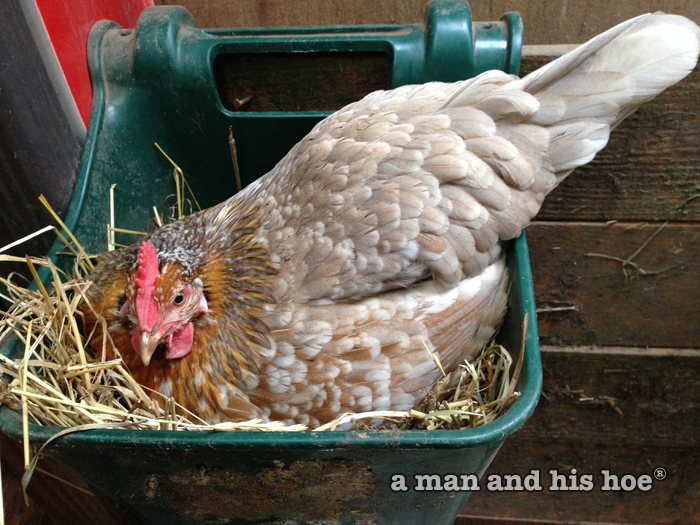Your cart is currently empty!
Her Nest

Each hen has her favorite nesting spot. Some hens stick to using the same nest for months. Other hens switch nests daily, weekly, monthly. No two hens are exactly alike. In any case, I’ve never met a hen which did not like to move a lot every day. Not just a few steps, but huge distances. When you take into account their size in relation to a human’s, it would be like a human walking five to ten miles a day. Chickens are on the move much of the day, and cover vast distances in a short time.
So I wonder what happens to the mental state of a hen in a cage. She’s imprisoned and has to use the same spot day in and day out. Most hens in an egg laying operation don’t even have a nest. They are trapped in a metal cage with no straw, no bedding. Their feet only touch metal their whole lives. As soon as they lay their egg, it rolls out of the cage and is whisked away on a conveyer belt.
What is it like for a hen to live in a metal box her whole life and never experience nestling into a comfortable straw nest? What is it like to see her eggs go rolling away? My guess is that most hens trapped in these egg laying factories develop severe mental problems. They aren’t designed to be treated in such a way. Even though they have very tiny brains, they still have many needs, and very few of those needs are ever met in a metal cage. How does this affect the quality of the eggs these hens lay? I’ve never found a store egg to have the vibrancy of my eggs. What are the effects of most people eating such poor quality eggs?
Perhaps it is time for food consumers to be more concerned about the quality of the food they buy, and the impact their food choices have on the well being of the animals producing their food. As I often say, that egg, that meat, those vegetables you eat are going to become you. Do you want your body to build your bones, skin, organs, with poor quality, ho-hum materials or with superb materials?
Leave a Reply
You must be logged in to post a comment.